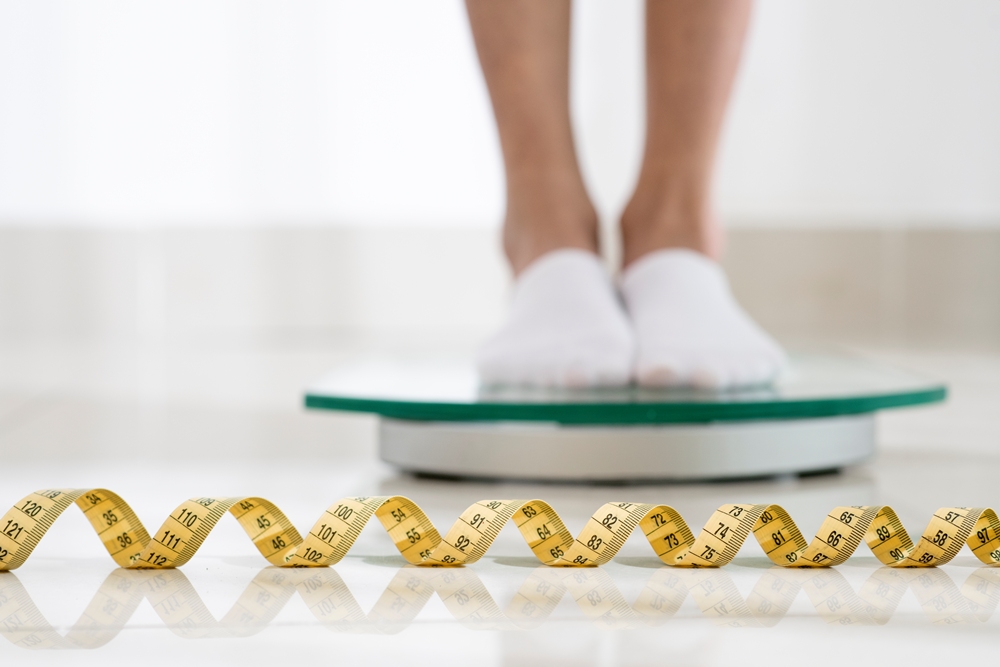Wellness
Vigorous physical activity could halve cardiovascular risk in middle-aged women

An average of four minutes of incidental vigorous physical activity a day could almost halve the risk of major cardiovascular events, such as heart attacks, for middle-aged women who do not engage in structured exercise, according to new research.
High-intensity physical activity that forms part of a daily routine is known as “vigorous intermittent lifestyle physical activity” (VILPA). Longer sessions of VILPA are linked to significantly lower cardiovascular disease risk.
The researchers say that, given fewer than 20 per cent of middle-aged or older adults engage in regular structured exercise, engaging in VILPA could be a good alternative.
“We found that a minimum of 1.5 minutes to an average of four minutes of daily vigorous physical activity, completed in short bursts lasting up to 1 minute, were associated with improved cardiovascular health outcomes in middle-aged women who do no structured exercise,” said lead author professor Emmanuel Stamatakis at the University of Sydney.
“Making short bursts of vigorous physical activity a lifestyle habit could be a promising option for women who are not keen on structured exercise or are unable to do it for any reason.
“As a starting point, it could be as simple as incorporating throughout the day a few minutes of activities like stair climbing, carrying shopping, uphill walking, playing tag with a child or pet, or either uphill or power walking.”
The study drew on data from 22,368 participants (13,018 women and 9,350 men) aged 40 to 79 who reported they did not engage in regular structured exercise. The data was collected from the UK Biobank, whose participants wore physical activity trackers for almost 24 hours a day for seven days between 2013 and 2015.
Cardiovascular health was monitored through hospital and mortality records, tracking major adverse cardiovascular events (MACE), such as heart attack, stroke, and heart failure, until November 2022.
After adjusting for factors such as lifestyle, socioeconomic position, cardiovascular health, co-existing conditions, and ethnicity, the researchers found that the more VILPA women did, the lower their risk of a major cardiovascular event.
Women who averaged 3.4 minutes of VILPA daily were 45 percent less likely to experience a major cardiovascular event. They were also 51 per cent less likely to have a heart attack and 67 per cent less likely to develop heart failure than women who did no VILPA.
Even when amounts of daily VILPA were lower than 3.4 minutes they were still linked to lower cardiovascular event risk. A minimum of 1.2 to 1.6 minutes of VILPA per day was associated with a 30 per cent lower risk of total major cardiovascular events, a 33 per cent lower risk of heart attack, and a 40 per cent lower risk of heart failure.
However, men reaped fewer benefits from tiny bursts of VILPA. Those who averaged 5.6 minutes daily were only 16 per cent less likely to experience a major cardiovascular event compared with men who did none. A minimum of 2.3 minutes per day was associated with only an 11 per cent risk reduction.
Professor Stamatakis said more testing was needed to understand how VILPA may improve cardiovascular health.
“To date, it hasn’t been clear whether short bursts of VILPA lower the risk of specific types of cardiovascular events, like heart attack or stroke. We aimed to identify minimum daily thresholds and feasible amounts for testing in community programs and future trials,” he said.
“Importantly, the beneficial associations we observed were in women who committed to short bursts of VILPA almost daily. This highlights the importance of habit formation, which is not always easy. VILPA should not be seen as a quick fix—there are no magic bullets for health. But our results show that even a little bit higher intensity activity can help and might be just the thing to help people develop a regular physical activity – or even exercise – habit.”
News
Just 30 mins of light activity can boost energy and mood, study finds

Swapping just 30 minutes of sitting for light activity, such as walking or housework, can improve mood and energy the following day, new research suggests.
A study involving more than 350 young adults found that on days when participants spent less time sitting and more time doing light activity, they felt happier and more energised the next day.
Researchers said light activity had the strongest link to improved next-day mood, while time spent sitting or lying awake was associated with poorer mood the following day.
The study, led by the University of Texas at Arlington and Monash University in Australia, tracked participants’ 24-hour movement patterns using wearable monitors.
“This study indicated that light activity — where you don’t have to go to the gym or do intense exercise — can lead to better feelings the next day when it replaces sedentary behaviour,” said Dr Yue Liao, kinesiology professor at UT Arlington.
“One doesn’t have to think, ‘I have to run,’ or ‘I have to do these big things.’ Just sitting less and moving more can have an immediate impact on your mood the next day.”
The findings are particularly relevant as 38 per cent of US adults spend nine or more hours sitting each day, according to a 2024 study by smart seating company Kalogon.
Researchers analysed daily activity across sleep, exercise, sedentary time and light movement. Moderate to vigorous activity, such as running or gym workouts, offered smaller mood benefits, while sleep duration showed no clear effect on next-day mood among participants.
“We looked at the 24-hour movement behaviour — sleep, exercise, sedentary time and light activity,” said Dr Liao.
“The 24-hour part is important because we’re not simply saying, ‘Do more of this.’ All these activities add up to 24 hours. From that perspective, when someone replaces sitting time with light activity, it predicts a better mood the next day. That’s the key point.”
The improvements were based on individual changes rather than comparisons between participants.
“Based on previous research, we assumed exercise would be the main factor, but our analysis mostly highlighted light activity,” Dr Liao said.
“You don’t have to work up a sweat to get benefits. Just moving a little more than your usual helps.”
The study suggests that small, everyday adjustments — such as standing up more often or walking briefly — can make a noticeable difference to wellbeing, the researchers concluded.
Technology
Night-time light exposure may increase stroke and heart attack risk

Bright light at night raises the risk of heart attack by 47 per cent and heart failure by 56 per cent, according to research involving nearly 89,000 people.
Being exposed to bright light at night could significantly increase the chances of developing serious heart problems, including heart attacks, strokes and heart failure.
The largest study of its kind tracked over 13 million hours of light exposure using wrist-worn sensors and followed participants for up to 9.5 years.
Those exposed to the brightest light at night were 56 per cent more likely to develop heart failure and 47 per cent more likely to suffer a heart attack. These risks remained high even after accounting for factors such as exercise, diet, sleep habits and genetics.
Researchers from Flinders University’s FHMRI Sleep Health analysed data from almost 89,000 people in the UK to investigate how personal light exposure affects heart health.
Dr Daniel Windred, lead author and research associate at Flinders University’s FHMRI Sleep Health, said the study highlights a risk factor many people overlook — one that is simple to address.
“This is the first large-scale study to show that simply being exposed to light at night is a strong and independent risk factor for heart disease,” said Dr Windred.
“Disrupting your body’s internal circadian clock by repeatedly exposing yourself to bright light at night, when it would typically be dark otherwise, will put you at a higher risk of developing dangerous heart issues.
“Thankfully, we do have some control over our exposure to light at night.
“By using blackout curtains, dimming lights, and avoiding screens before bed, we can help to reduce the health risks associated with light at night.”
The study also found that women and younger people were especially vulnerable to the effects of light exposure at night.
“Women may be more sensitive to the effects of light disrupting their body clock, which supports earlier research findings,” said senior co-author Professor Sean Cain.
“In fact, women exposed to high levels of night light had similar heart failure risks to men, which is unusual because women typically have some natural protection against heart disease.”
Everyday behaviours may also pose risks, added senior co-author Associate Professor Andrew Phillips.
“Everyday habits, like scrolling on your phone in bed or falling asleep with the TV on or bedroom lights on, can expose you to potentially harmful levels of light,” said Associate Professor Phillips from FHMRI Sleep Health.
“We’re not talking about extreme cases — even low levels of indoor light can interfere with your body’s natural rhythm.”
Unlike previous studies that relied on satellite images or surveys of outdoor light at night, this research used real-time data from wearable devices, providing a clearer picture of how indoor light environments affect health.
The circadian clock — the body’s internal timing system — regulates sleep-wake cycles and other biological processes over about 24 hours.
With heart disease still the leading cause of death worldwide, the researchers say it is time to treat light at night as a health risk, alongside poor diet, lack of exercise and smoking.
The team is calling for more research into lighting guidelines for homes, hospitals and cities to help reduce night-time light exposure.
“We need to take our body clocks seriously,” said Professor Cain.
“Protecting our natural sleep rhythms could be a powerful way to fight heart disease.”
News
Weight loss drug reduces heart attack and stroke risk regardless of weight loss

Semaglutide reduces the risk of heart attack and stroke by 20 per cent, regardless of weight lost, according to the largest study of 17,604 patients.
The drug, the main ingredient in Wegovy, reduced the risk of major adverse cardiac events — including deaths from heart disease, heart attacks or strokes — by 20 per cent, regardless of the weight patients lost.
The findings suggest the drug may have wider benefits beyond weight loss and should not be restricted only to those with the highest body mass index (BMI).
The study, led by researchers at University College London, examined data from 17,604 adults aged 45 and over who were overweight or obese across 41 countries. Half received weekly injections of semaglutide, while the other half were given a placebo.
Previous analysis had already shown semaglutide’s 20 per cent reduction in cardiac events; this follow-up analysis confirmed the benefit remained even when weight loss was minimal.
Even participants who were only mildly overweight — with a BMI of 27, roughly the UK average — saw similar benefits to those with the highest BMI scores.
The benefits were also largely independent of how much weight people lost in the first four months of treatment.
However, a reduction in waist circumference — a measure of abdominal fat — explained about one-third of the observed cardiovascular benefits.
Professor John Deanfield, from UCL’s Institute of Cardiovascular Science, said: “Abdominal fat is more dangerous for our cardiovascular health than overall weight and therefore it is not surprising to see a link between reduction in waist size and cardiovascular benefit.
“However, this still leaves two-thirds of the heart benefits of semaglutide unexplained. These findings reframe what we think this medication is doing.
“It is labelled as a weight-loss jab but its benefits for the heart are not directly related to the amount of weight lost – in fact, it is a drug that directly affects heart disease and other diseases of ageing.”
He added: “This work has implications for how semaglutide is used in clinical practice.
“You don’t have to lose a lot of weight and you don’t need a high BMI to gain cardiovascular benefit. If your aim is to reduce cardiovascular disease, restricting its use to a limited time only and for those with the highest BMIs doesn’t make sense.
“At the same time, the benefits need to be weighed against potential side-effects. Investigations of side-effects become especially important given the broad range of people this medicine and others like it could help.”
The Select trial findings indicate that semaglutide’s cardiovascular effects are likely driven by multiple mechanisms rather than weight loss alone.
While shrinking waistlines contributed to the outcome, most of the heart benefit appears to stem from other biological effects that directly influence cardiovascular pathways.

 News2 months ago
News2 months agoThousands in England unable to access weight loss jabs via NHS, figures reveal

 News3 weeks ago
News3 weeks agoBrain shape changes could offer early warning signs of dementia, study suggests

 News1 month ago
News1 month agoRound up: First AI-powered app for longevity and more

 Wellness2 weeks ago
Wellness2 weeks agoHigh fat diet may keep brain young, study suggests

 News2 months ago
News2 months agoBetter nutrition and tailored exercise programmes key to preventing care home falls

 Research1 month ago
Research1 month agoNHS warns against dismissing symptoms as ‘natural part of ageing’

 News3 days ago
News3 days agoWeight loss drug reduces heart attack and stroke risk regardless of weight loss

 Research2 months ago
Research2 months agoAir pollution can drive devastating forms of dementia, study suggests




































